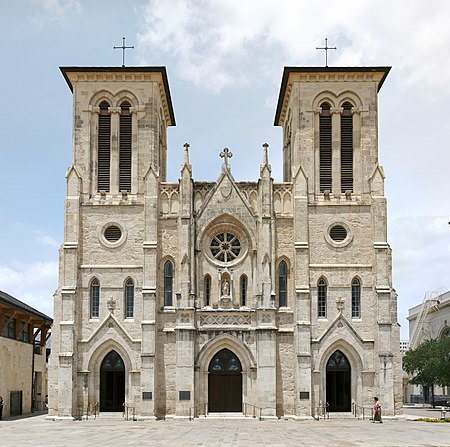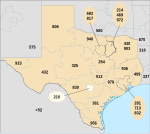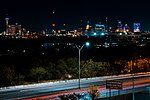Roman Catholic Archdiocese of San Antonio

The Roman Catholic Archdiocese of San Antonio is an archdiocese of the Catholic Church in the United States, and sui juris Latin Church in full communion with the pope of Rome. It encompasses 27,841 square miles (72,110 km2) in the U.S. state of Texas. The Roman Catholic Archdiocese of San Antonio had a self-reported 2018 population of 796,954, up from 728,001 in 2014. The archdiocese includes the city of San Antonio and the following counties: Val Verde, Edwards, Kerr, Gillespie, Kendall, Comal, Guadalupe, Gonzales, Uvalde, Kinney, Medina, Bexar, Wilson, Karnes, Frio, Atascosa, Bandera County, and the portion of McMullen north of the Nueces River.On August 28, 1874, the Roman Catholic Diocese of Galveston was divided and the northern territory was canonically erected by the Holy See as the Roman Catholic Diocese of San Antonio. Originally part of the Ecclesiastical Province of New Orleans, it was subsequently elevated on August 3, 1926, to a metropolitan archdiocese.The archbishop of San Antonio also serves as the metropolitan of the ecclesiastical province of San Antonio with the Roman Catholic Archdiocese of San Antonio overseeing the following suffragan dioceses: Amarillo, Dallas, El Paso, Fort Worth, Laredo, Lubbock, and San Angelo. All of Texas' dioceses had been suffragan sees under San Antonio until December 2004 when Pope John Paul II created the new Ecclesiastical Province of Galveston-Houston and elevated the Archdiocese of Galveston-Houston to a metropolitan see.
Excerpt from the Wikipedia article Roman Catholic Archdiocese of San Antonio (License: CC BY-SA 3.0, Authors, Images).Roman Catholic Archdiocese of San Antonio
Trevino Street, San Antonio
Geographical coordinates (GPS) Address Nearby Places Show on map
Geographical coordinates (GPS)
| Latitude | Longitude |
|---|---|
| N 29.4246 ° | E -98.4942 ° |
Address
San Fernando Cathedral (Church of Nuestra Señora de la Candelaria y Guadalupe)
Trevino Street
78205 San Antonio
Texas, United States
Open on Google Maps









